Tender, fluffy cinnamon rolls might seem impossible without dairy and eggs, but these soft vegan cinnamon rolls rise to the occasion. They’re naturally egg-free and made dairy-free, and provide a bakery-style breakfast experience. You can make them completely by hand, with a little help from your stand mixer, or with extra assistance from your bread machine.
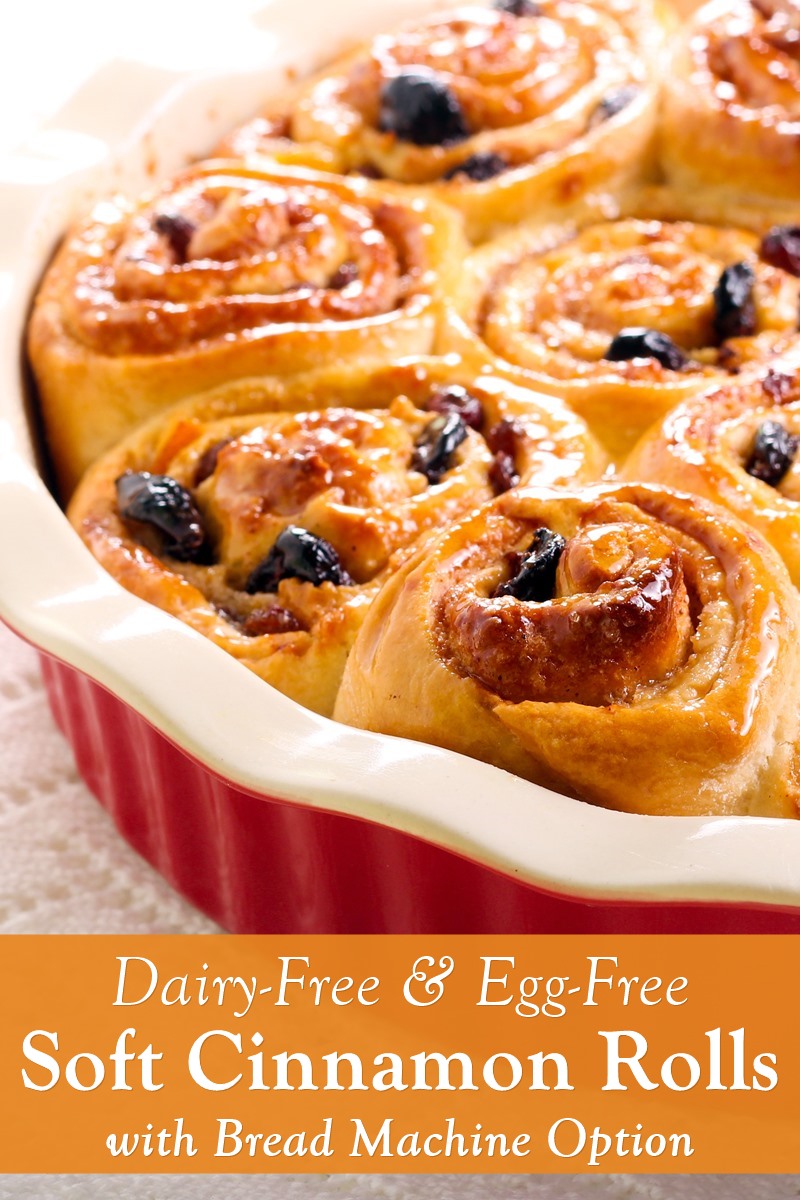
Soft Vegan Cinnamon Rolls with Bread Machine & Raisin Options
This soft vegan cinnamon rolls recipe is adapted from the Betty Crocker Best Bread Machine Cookbook. We made the recipe by hand, swapped out any dairy, added some options, and adjusted the directions. But we stayed true to the original formula, which was already eggless! I’ve also retained the bread machine directions, so you can make the recipe by hand or with the help of your bread maker.
Why Use Bread Flour in Cinnamon Rolls?
Bread flour is higher protein than all-purpose flour, and can absorb more liquid than all-purpose flour. This adds to the moistness and softness of the finished roll while providing structure to maintain a loftier lift.
If you substitute all-purpose flour for the bread flour, the recipe will still work, but these vegan cinnamon rolls won’t be quite as soft and boisterous. You can increase the yeast a little, up to 1 3/4 teaspoons, to help with the rise. But the resultant rolls will still be a little wimpier.
Do I have to Knead the Dough?
If you have a bread machine, it will do the work for you. But if you are making the rolls by hand, you definitely want to knead the dough. It develops the gluten to give your vegan cinnamon rolls their tender texture. But don’t worry – it can actually be fun! This is a soft dough that is wonderful to work with, and kneading dough is quite therapeutic. See this tutorial for How to Knead Dough, which includes a stand mixer option (if you don’t want to get your hands dirty).
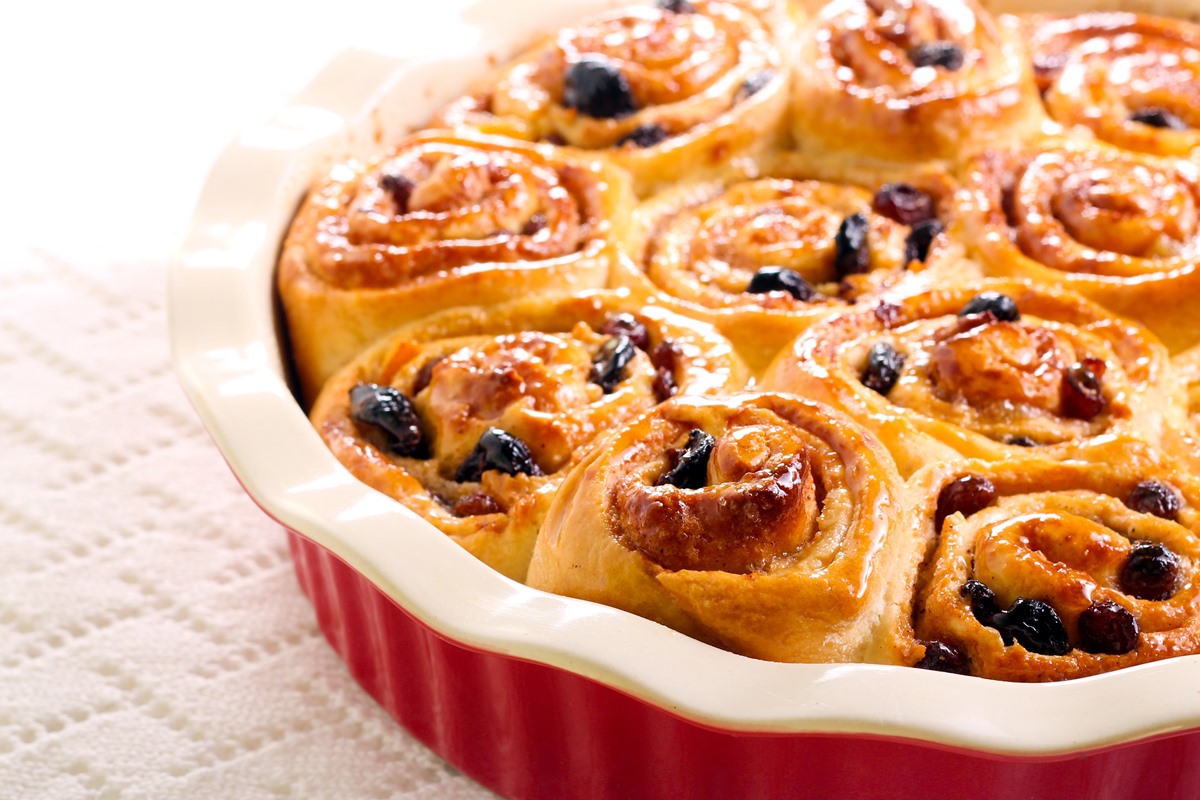
Special Diet Notes: Glazed Vegan Cinnamon Rolls
By ingredients, this recipe is dairy-free / non-dairy, egg-free, nut-free, peanut-free, soy-free, vegan, and vegetarian.
- 3⁄4 cup + 2 tablespoons warm water
- 1¼ teaspoons active dry yeast
- 2½ cups bread flour, or as needed
- ¼ cup sugar
- 2 tablespoons oil (can sub dairy-free buttery spread)
- 1 teaspoon salt
- 1⁄3 cup brown sugar
- 2 teaspoons ground cinnamon
- 2 tablespoons dairy-free buttery spread
- ½ cup raisins (optional)
- 1 cup powdered sugar
- 1 to 2 tablespoons dairy-free milk beverage, as needed
- 1⁄2 teaspoon vanilla extract
- Place the water in a mixing bowl and sprinkle on the yeast. Let it sit and proof for 5 minutes. If active, it should be foamy.
- Add about half of the flour, the sugar, oil, and salt to the yeast mixture and stir until combined. Gradually stir in the remaining flour, bringing the dough together with your hands when needed.
- Turn the dough out onto a floured surface, and knead it until smooth and elastic, about 5 to 7 minutes. If the dough is too sticky to knead, add more flour, as needed.
- Place the dough back in the mixing bowl and cover it lightly. Let the dough rise in a warm place for about 1 hour, or until double in size.
- Punch the dough down and let it rest for 5 minutes.
- In a small bowl, whisk together the brown sugar and cinnamon.
- Grease a 9-inch square baking dish.
- Roll the dough out into a 9x11 inch rectangle on a lightly floured surface.
- Spread the dairy-free buttery spread evenly over the dough. Evenly sprinkle on the brown sugar-cinnamon mixture. Sprinkle on the raisins (if using).
- Starting from one of the short sides, tightly roll the dough up into a log and pinch the edge to seal. Turn the log seam side down, and cut into 1-inch slices. Place the slices seam side down in your prepared baking dish.
- Cover the rolls loosely with plastic wrap and let them rise for 1 hour in a warm place, or overnight in the refrigerator (if you want to bake them in the morning). The dough should double in size.
- Preheat your oven to 375°F.
- Bake the rolls for 20 minutes, or until golden.
- In a small bowl, whisk together the powdered sugar, milk beverage, and vanilla to make a glaze. Drizzle or brush the glaze on the warm raisin cinnamon rolls.
This recipe is adapted from Betty Crocker's Best Bread Machine Cookbook.

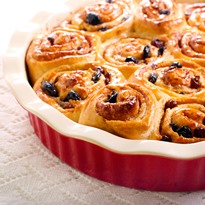
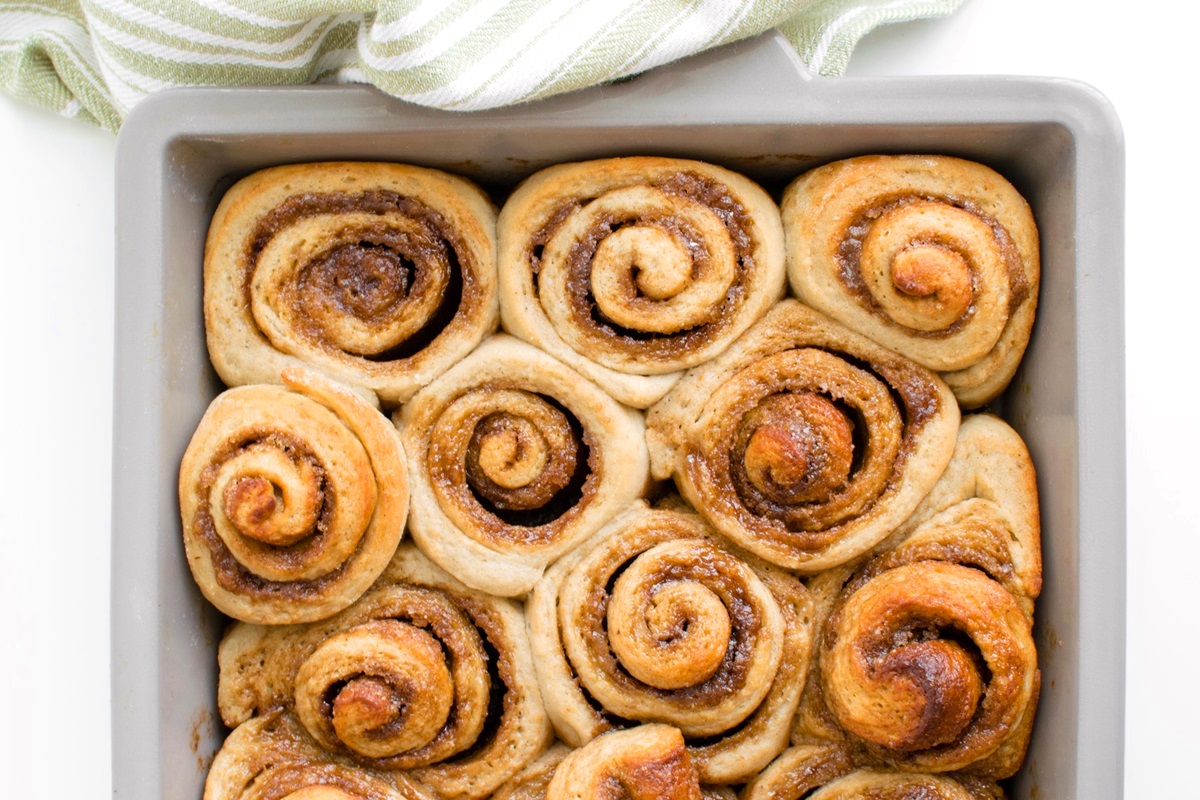
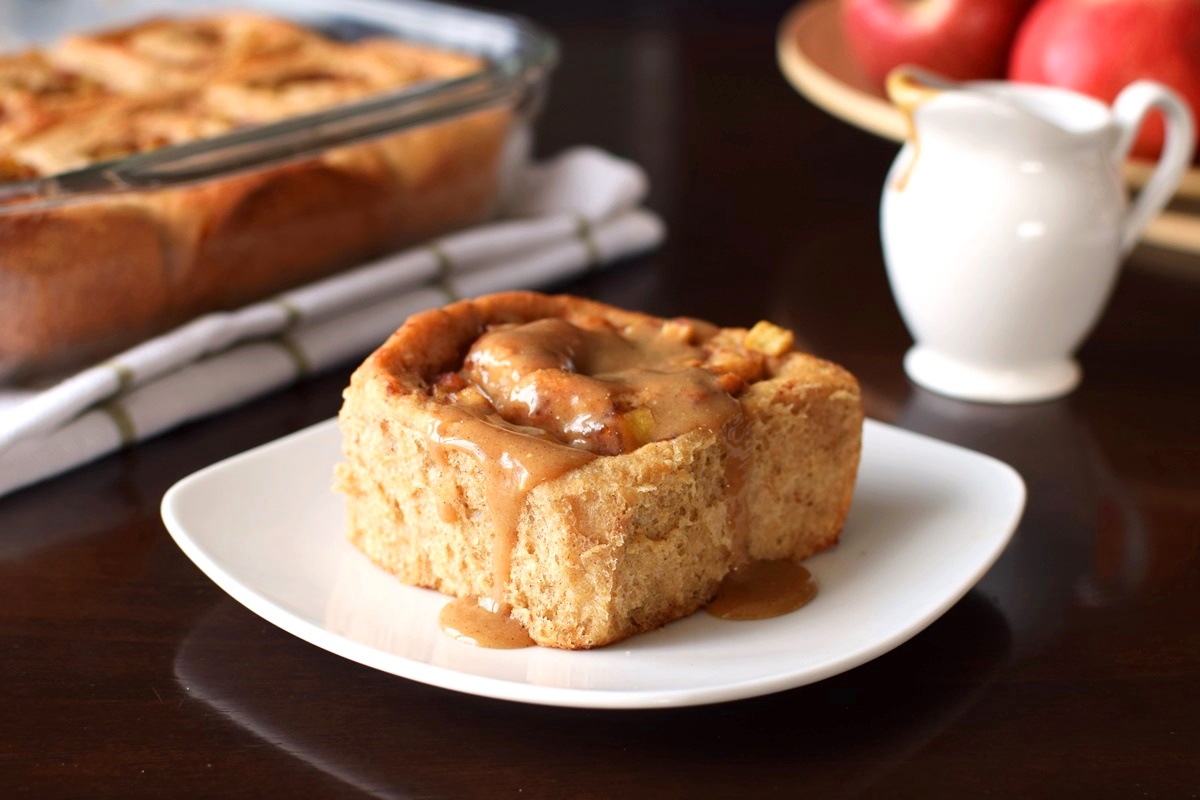
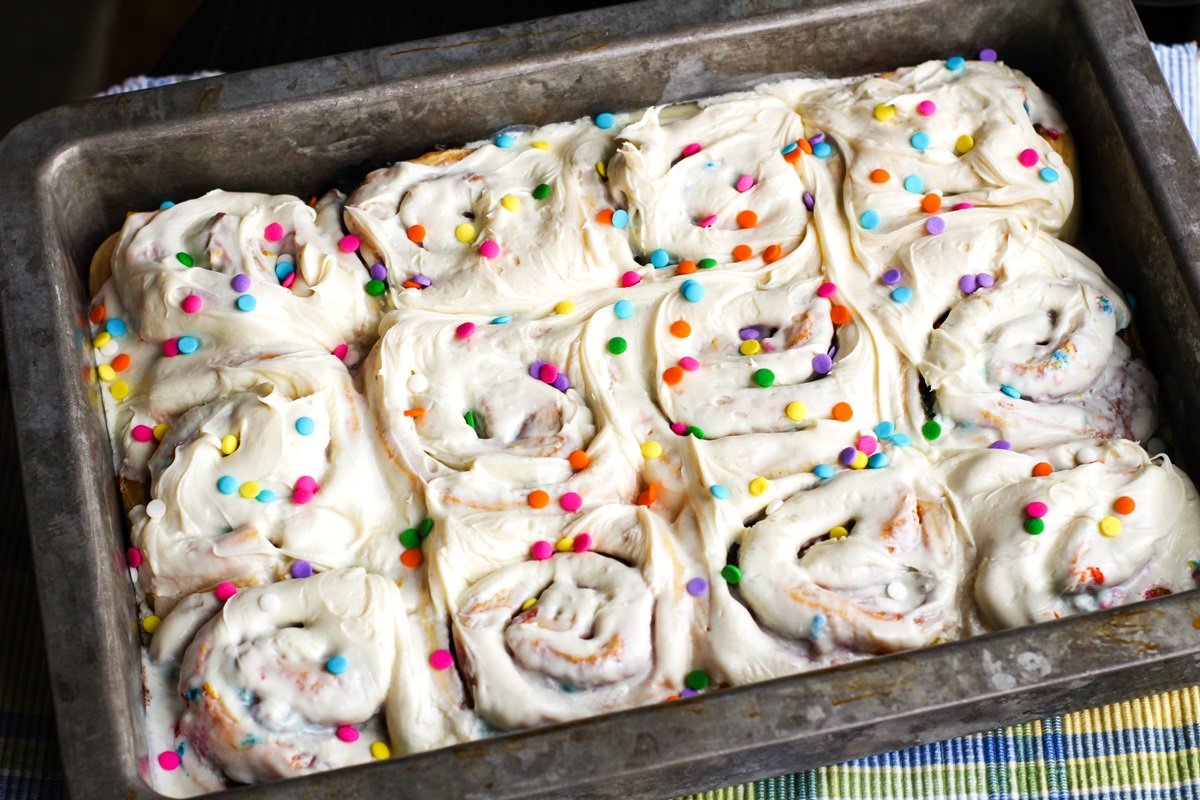
18 Comments
I used the bread machine and these turned out really good. The tops got a little burnt cooking at the recommended temp and time. Still edible and tasty.
Glad you enjoyed them Heather! Bread machines can vary in how they cook, so I would adjust based on how they cooked. If the tops browned too much but the middle was perfect, I would reduce the temperature on your machine. If the middle was a little dry, I would just reduce the time on your machine.
Sorry, 20 minutes not 30
I’ve made these rolls many times now and the recommended 375 oven setting for 30 minutes always burns the tops 🙁 so today I left them in for 15 and they were still doughy. Next time I will try 350. Beside that these are fantastic and always a huge hit!
Thank you for your feedback Janica!
Also, you might try moving the rack position down in your oven. It sounds like your oven isn’t circulating the air fully as heat rises. Moving the cinnamon rolls to a lower position in the oven can help them bake through fully without burning the tops.
Can I double this recipe in the bread machine or will I have to make two separate batches?
Most likely, two separate batches. It depends on the capacity of your bread machine.
These rolls came out great! I used half the amount of glaze and no raisins, and they were delicious!
So glad you enjoyed the recipe and thanks for the feedback Leah!
Alisa! OMG! These cinnamon rolls are absolutely delicious! I didn’t think I was capable of making something so good! They are soft and fluffy. Will definitely be making again! Thank you! 😊
Glad you enjoyed them Lucy!
How much sugar and water shall I use in grams and ml ?
I’m not sure off hand, and am not sure which sugar you are referring to, otherwise I would have looked it up. But you can search google for “xxx cups of xxx to grams” and it will pop up with the conversion.
Thanks for clarifying! I did indeed use all-purpose flour. I was using the King Arthur Flour weight chart, which lists both bread flour and all-purpose flour at 120g per cup.
The buns still turned out great, despite my miscalculation. This just gives me an excuse to try again tomorrow. I anticipate the entire batch will be gone about 10 minutes after my kids wake up…
Thanks for a great recipe, and thanks for helping out on the measurements!
I’m so happy it worked out anyway!
How much flour would you use in grams? 2.5 cups should be 300 grams of flour, but this resulted in a very wet sticky dough. Even after adding about 50-75 more grams, the dough was still much softer than it should have been.
Did you use bread flour? When I calculate with bread flour, it should be about 340 grams. I’m guessing by the amount that you listed, you used all-purpose flour instead of bread flour 2 1/2 cups of all-purpose flour is 300 grams, bread flour is 340 grams). All purpose flour isn’t as glutenous as bread flour, so you would need a fair bit more. The dough should be very soft, but not sticking to your hands. This is a Betty Crocker recipe – just slight adaptations, but nothing that would affect the ratios.